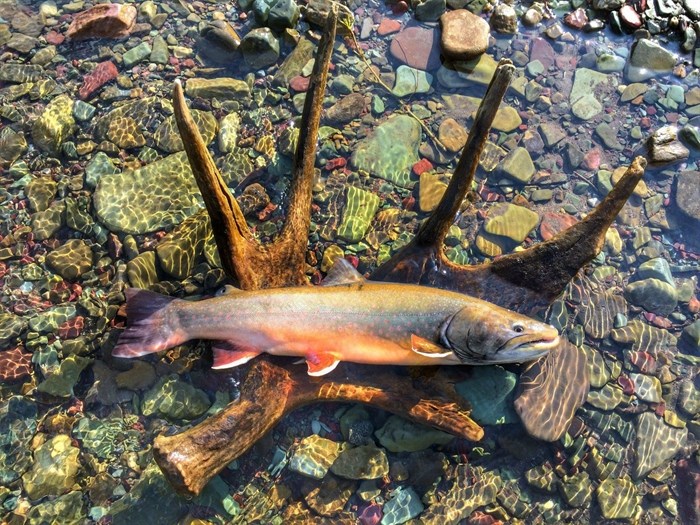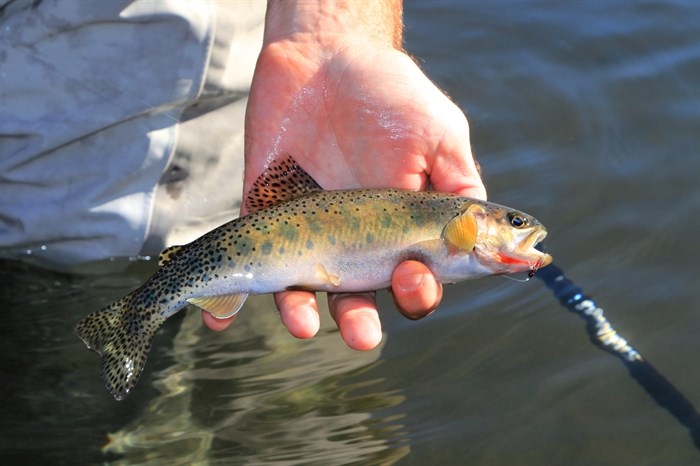
The Ktunaxa Nation and Canada will use $58 million in environmental penalties to restore the Elk Valley, damaged by decades of mining.
Image Credit: FLICKR/Jim Mogen
March 29, 2025 - 7:00 PM
A restoration project is underway in southeastern B.C. to repair ecosystems extensively damaged by coal mining, using funds from the largest pollution penalty ever imposed under the Fisheries Act.
Led by a partnership between the Canadian government and the Ktunaxa Nation, the $58-million cleanup of Elk Valley in the Kootenay region will come from a fine imposed on Teck Coal Limited, the company responsible for most of the area’s coal mining. The $60-million fine against Teck was turned over to the federal government’s environmental damages fund.
This is the first time the federal department has worked with an Indigenous partner to develop an allocation strategy for the fund. The collaboration is a significant and essential step in addressing the historical and current damage caused by coal mining in the Elk Valley, said Nasu?kin (Chief) Heidi Gravelle, Yaq?it ?a·knuq?i’it (Tobacco Plains Band).
“It's really important to invest that fine … back into creating systems, practices, research and initiatives to correct what has been done, or at least mitigate and find solutions to work towards healthier waterways,” Gravelle said.
Mining operations released harmful substances, primarily selenium and calcite, into the Elk Valley watershed, killing fish and causing lasting damage to their habitat.
The population of threatened westslope cutthroat trout in a river below the mine dropped by 93 per cent between 2017 and 2019. The following year, 90 per cent of the species’ adult trout in a 60-km stretch of the upper Fording River were gone.
The Ktunaxa Nation Council, which represents four Ktunaxa First Nations, will be leading the restoration projects. They will fund efforts to protect native fish habitats, including those of westslope cutthroat trout, bull trout and burbot, restore aquatic and riparian habitats, study contaminants like selenium and assess the impacts of climate change and water management using hydrological assessments of the Elk River. They will also collaborate with groups like the Elk River Alliance on restoration work.
The Ktunaxa Nation Council is led by the leadership of four Ktunaxa First Nations: ?akisq?nuk First Nation (the land between two lakes), ?aq?am (St. Mary's Indian Band), yaqan nu?kiy (Lower Kootenay Band) and Yaq?it ?a·knuq?i'it (Tobacco Plains Band).

Aerial view of the Elk River in the Elk Valley.
Image Credit: SUBMITTED
"When you’re involved with an industry like mining, there’s a lot of impact on the environment overall. ... That means impact on the land, on water, which includes the habitat of the fish,” said Kathryn Teneese, Ktunaxa Nation Council chairperson. “We have a responsibility for stewardship of our homeland."
Despite billions invested since 2013 to mitigate the damage, the Elk Valley environmental crisis remains dire. Water treatment facilities can now treat 77.5 million litres per day and remove 95 to 99 per cent of selenium from the water. But it’s not enough. A report says at least $6.4 billion is needed to reverse rising selenium levels in affected waterways.
The mines were originally owned by Teck and are still in operation today under the ownership of Glencore, a Swiss mining company that acquired the remaining stake last year.
A critical element missing from previous environmental restoration efforts has been the inclusion of First Nations' cultural knowledge in the decision-making process, Gravelle noted.
“There's that fine line between a superficial checkbox of what is reconciliation and what is First Nations involvement — is it just meeting and making us aware, or is it true inclusion?" she said.
“As ?akanuxunik’ (people from where water comes out of the mountain), we have a responsibility to be part of the process that will heal our water and to heal our lands.”

Westslope cutthroat trout in the Little Blackfoot River, located within the Helena-Lewis and Clark National Forest in Montana.
Image Credit: SUBMITTED
Teneese hopes the partnership with Ottawa allows flexibility and moves forward quickly. “We’re not going to have our hands tied by the way governments have traditionally approached things,” she said.
There will be two primary funding streams: First Nations, including the Ktunaxa, Shuswap Band, and Okanagan Nation Alliance, will receive 75 per cent of the funding. The remaining 25 per cent will be open to applications. The direct stream will involve First Nations governments, who will hire experts and build capacity to handle the on-the-ground restoration work, including cultural components, testing, and monitoring. The competitive stream will allow other organizations and individuals passionate about ecosystem restoration to apply.
"If we can continue to work in partnership with all the parties involved, I’m somewhat optimistic ... but at the same time, we need to be very diligent in making sure that all of the parties involved are living up to the commitments that they're making," said Teneese.
Industry must be held responsible for past actions and play a key role in addressing current environmental issues, the leaders said.
"If we've asked them to up and leave today, it doesn't mean the damages go away. They're still there. So, they need to be responsible, held accountable, but also be a part of the solutions as well," said Gravelle.
The damage to the land and water is severe and cannot be fully undone, but combining Indigenous stewardship and western science in restoration efforts can result in positive outcomes. “Our lands and waters have the ability to heal themselves. They just have to be given this space and the energy and the respect for that to happen.” said Gravelle.
— This story was originally published by Canada's National Observer
News from © iNFOnews, 2025